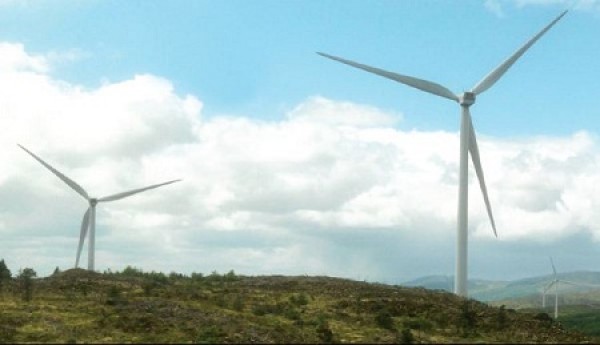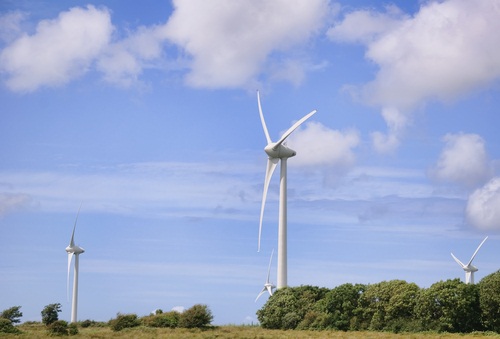Wind power works best if it comes from a wide range of sites and is part of a diverse mix of energy sources. This helps smooth peaks in production and gives grid operators flexibility in managing load.
That’s what makes the new agreement between Element Power Ireland and National Grid UK on a grid connection, which could send up to 10 terawatt-hours of wind-generated power from Ireland to the United Kingdom annually, so important.

Well, that and the fact that the U.K. – enmeshed now in an intra-govenrment row over support levels for domestic wind development – badly needs the power to meet its clean energy targets.
Element Power has dubbed the grid-connect scheme “Greenwire.” The company envisions linking together 3,000 megawatts of wind power in the Midlands of Ireland and sending it to the U.K. through two cables running at the floor of the Irish Sea by 2018.
That amount of power would represent 10 percent of the 30,000 MW of renewable generating capacity the U.K. needs to meet its 2020 renewables target of 15 percent clean energy.
“Optimizing the natural renewable resource around our islands would benefit us all,” U.K. Energy Minister Charles Hendry said in a statement. “As we face a future where we will be increasingly dependent on imported fossil fuels and understandable concerns about costs, it is absolutely sensible to look at how we can share the clean, green energy which our neighbours have in abundance.”
And how much the Brits themselves might be able to produce is right now looking a little sketchy; the Element-National Grid announcement came as Britain’s coalition government continued to send mixed signals regarding its commitment to onshore wind development on its own home turf.
According to reports, Conservative Chancellor of the Exchequer George Osborne is seeking a 25 percent cut in subsidies. Energy and Climate Change Secretary Ed Davey, a Liberal Democrat, has apparently agreed to cuts of around 10 percent, reflecting the declining cost of the developments.
An announcement of a deal on the matter was expected in Parliament on Tuesday, but was delayed for a second time, and MPs are now scheduled to be out for summer recess until September. All this government fiddling, Reuters reported, was “risking further delays in projects that will help Britain meet its legally binding climate change targets.”
So perhaps it will be Ireland to the rescue.
Right now, the Emerald Isle has about 2,000 MW of wind power capacity, according to the state-owned grid operator EirGrid. So at least 1,000 MW of new capacity – and undoubtedly a whole lot more than that – would be necessary to enable exports to the U.K. at the level talked about in the Element-National Grid announcement.
Late last year, the Irish government said that in order to meet a goal of 40 percent renewables on the grid by 2020, it would need 5,100 MW of installed wind capacity, with most of that coming offshore. But if 3,000 MW goes to the U.K., the Irish will need to build even more to meet their own needs.

Element said it’s on the case.
“In anticipation of getting U.K. grid connection, the company has been working in Ireland over the past two years identifying potential wind farm sites, speaking with local authorities, working with environmental consultants and reaching agreements with land-owners,” Element Power Ireland CEO Tim Cowhig said in a statement. “We also spent considerable effort identifying the best grid points in Wales, and we designed our project to match the capacity available.”
Element emphasized that the envisioned connection would not require new, potentially politically difficult transmission lines in the U.K.
“Our connections are not triggering any new overhead line reinforcements in the U.K., and this gives us confidence that we can connect by 2018, in time to help the U.K .meet their 2020 targets,” Cowhig said.